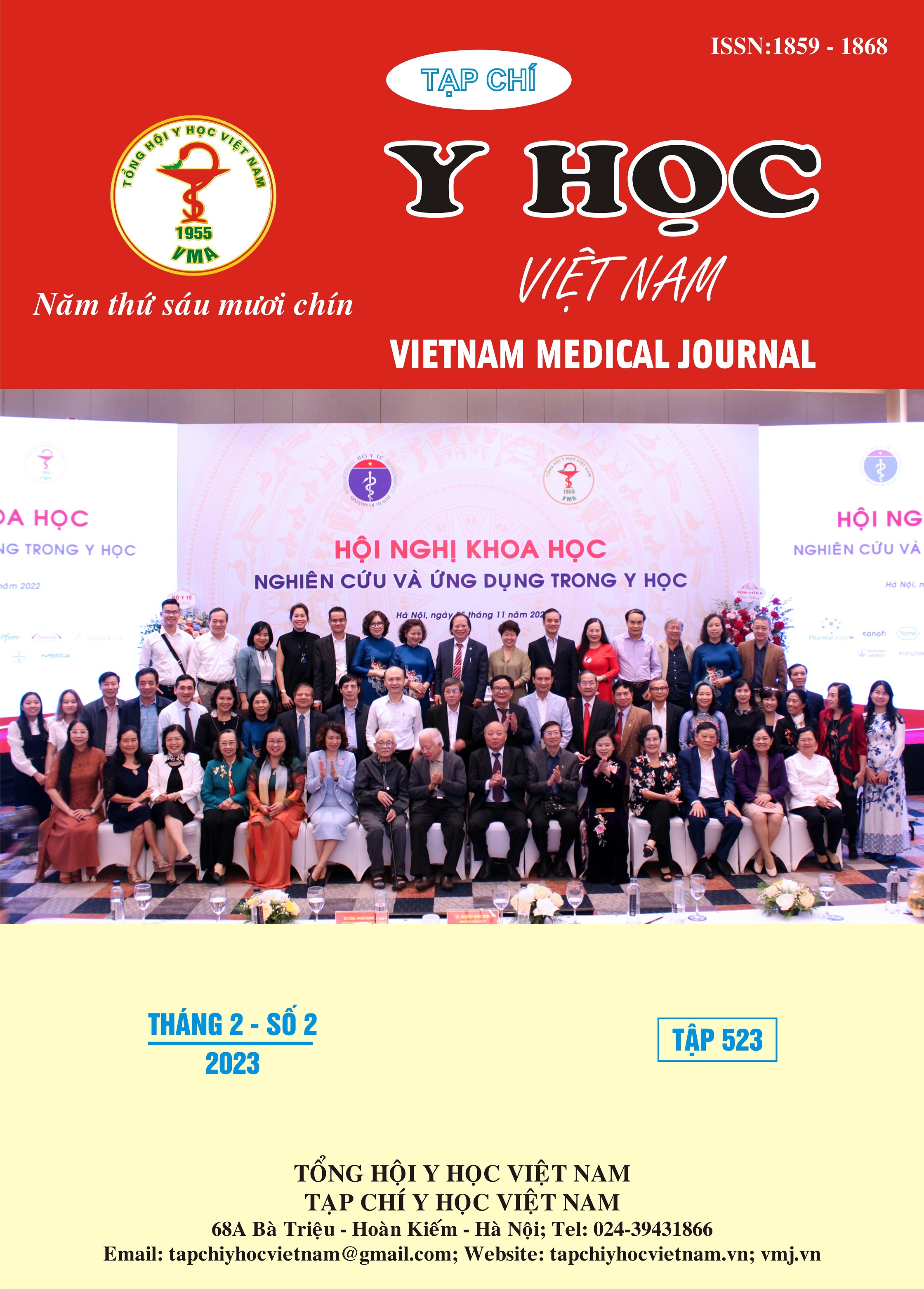IDENTIFICATION OF THE CANDIDA CAUSING VULVAR - VAGINITIS AND THE RESULTS OF TREATMENT BY LACTOBACILLI AND ECONAZOLE
Main Article Content
Abstract
Objectives: To identify Candida strains caused vulvovaginitis, vaginitis and the results of treatment with Lactobacilli combination Econazole. Methods: Study on a randomized controlled clinical trial, longitudinal follow-up on 70 vulvovaginitis patients who came for examination and treatment at the National Hospital of Dermatology and Verenology from August 2021 to July 2022. Results: The highest number of patients with C. albicans strain was 62.86%. Symptoms significantly decreased after 14 and 28 days of treatment, the difference was statistically significant with p<0.05. The good treatment result in group 1 after 14 days was 91.18%, higher than that in group 2 was 72.73%. The good treatment result in group 1 after 28 days was 88.24%, higher than that in group 2 was 69.7%. Conclusions: The most common fungal strain causing vulvovaginitis is C.albicans (62,86%). Treatment with Econazole alone or combination gave a good therapeutic effect after 28 day, however the combination group of Econazole and Lactobacilli had a higher efect
Article Details
Keywords
Candida strains, vulvovaginitis, Lactobacilli, econazole.
References
2. Klein Catherine. Infection en gynecology. Infections Gynec Klein. 2002;
3. Richard A Claderone. Candida and Candidiasis. 2002:pp 15-349.
4. Marchaim D, Lemanek L, Bheemreddy S, Kaye KS, Sobel JD. Fluconazole-resistant Candida albicans vulvovaginitis. Obstet Gynecol. 2012;120(6):1407-14.
5. Bolouri F, Moghadami Tabrizi N, Davari Tanha F, et al. Effectiveness of fluconazole for suppressive maintenance therapy in patients with RVVC: a randomized placebo-controlled study. J Iranian Journal of Pharmaceutical Research. 2009;(4):307-313.
6. Martins HP, da Silva MC, Paiva LC, Svidzinski TI, Consolaro ME. Efficacy of fluconazole and nystatin in the treatment of vaginal Candida species. Acta dermato-venereologica. Jan 2012;92(1):78-82. doi:10.2340/00015555-1194
7. Gardner HL, Dukes CDJAjoo, gynecology. Haemophilus vaginalis vaginitis: a newly defined specific infection previously classified “nonspecific” vaginitis. 1955;69(5):962-976.
8. Wilson RM, Tomlinson DR, Reeves WG. Neutrophil sorbitol production impairs oxidative killing in diabetes. Diabetic medicine: a journal of the British Diabetic Association. Jan-Feb 1987;4(1):37-40.
9. Vicariotto F, Mogna L, Del Piano M. Effectiveness of the two microorganisms Lactobacillus fermentum LF15 and Lactobacillus plantarum LP01, formulated in slow-release vaginal tablets, in women affected by bacterial vaginosis: a pilot study. J Clin Gastroenterol. Nov-Dec 2014;48 Suppl 1:S106-12.


